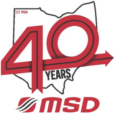CDC recommends a layered strategy to reduce exposures to SARS-CoV-2, the virus that causes COVID-19. This includes using multiple mitigation strategies with several layers of safeguards to reduce the spread of disease and lower the risk of exposure. While it may not be necessary to apply every consideration to be protective, implementing multiple mitigation strategies is recommended, if possible, to improve effectiveness. In addition to ventilation, the layered approach includes efforts to improve social distancing, wearing face masks, and hand hygiene.
SARS-CoV-2 viral particles spread between people more readily indoors than outdoors. When outdoors, the concentration of viral particles rapidly reduces with the wind, even a very light wind. When indoors, ventilation mitigation strategies help to offset the absence of natural wind and reduce the concentration of viral particles in the indoor air. The lower the concentration, the less likely some of those viral particles can be inhaled into your lungs; contact your eyes, nose, and mouth; or fall out of the air to accumulate on surfaces. Protective ventilation practices and interventions can reduce the airborne concentration, which reduces the overall viral dose to occupants.
Below is a list of ventilation interventions that can help reduce the concentration of virus particles in the air, such as SARS-CoV-2. They represent a list of “tools in the mitigation toolbox,” each of which can be effective on their own. Implementing multiple tools at the same time is consistent with CDC mitigation strategies and increases overall effectiveness. These ventilation interventions can reduce the risk of exposure to the virus and reduce the spread of disease, but they will not eliminate risk completely.
While the list of tools is intended to be universally applicable across indoor environments, applying them to different building types, occupancies, and activities under environmental and seasonal changes can be challenging. The specific combination of tools chosen for use at any point in time can change. It will be up to the building owner/operator (obtaining expert consultation as needed) to identify which tools are appropriate for each building throughout the year. CDC also has information on Ventilation in Schools and Child Care Facilities.
Considerations to Improve Ventilation
Consider ventilation system upgrades or improvements and other steps to increase the delivery of clean air and dilute potential contaminants. Obtain consultation from experienced Heating, Ventilation and Air Conditioning (HVAC) professionals when considering changes to HVAC systems and equipment. Some of the recommendations below are based on Guidance for Building Operations During the COVID-19 Pandemicpdf iconexternal icon from the American Society of Heating, Refrigerating, and Air-Conditioning Engineers (ASHRAE). In addition to buildings, ventilation considerations are also important when you have multiple persons within vehicles, including public transportation (buses, subways, trains, school buses, carpools, and rideshares). Not all considerations are applicable for all scenarios.
Ventilation improvements may include some or all of the following considerations:
- Increase outdoor air ventilation, using caution in highly polluted areas.
- When weather conditions allow, increase fresh outdoor air by opening windows and doors. Do not open windows and doors if doing so poses a safety or health risk (e.g., risk of falling, triggering asthma symptoms) to occupants in the building.
- Use fans to increase the effectiveness of open windows. To safely achieve this, fan placement is important and will vary based on room configuration. Avoid placing fans in a way that could potentially cause contaminated air to flow directly from one person over another. One helpful strategy is to use a window fan, placed safely and securely in a window, to exhaust room air to the outdoors. This will help draw fresh air into room via other open windows and doors without generating strong room air currents.
- Decrease occupancy in areas where outdoor ventilation cannot be increased.
- Ensure ventilation systems operate properly and provide acceptable indoor air quality for the current occupancy level for each space.
- Increase airflow to occupied spaces when possible.
- Turn off any demand-controlled ventilation (DCV) controls that reduce air supply based on occupancy or temperature during occupied hours. In homes and buildings where the HVAC fan operation can be controlled at the thermostat, set the fan to the “on” position instead of “auto,” which will operate the fan continuously, even when heating or air-conditioning is not required.
- Open outdoor air dampers beyond minimum settings to reduce or eliminate HVAC air recirculation. In mild weather, this will not affect thermal comfort or humidity. However, this may be difficult to do in cold, hot, or humid weather.
- Improve central air filtration:
- Increase air filtration external icon to as high as possible without significantly reducing design airflow.
- Inspect filter housing and racks to ensure appropriate filter fit and check for ways to minimize filter bypass.
- Check filters to ensure they are within their service life and appropriately installed.
- Ensure restroom exhaust fans are functional and operating at full capacity when the building is occupied.
- Inspect and maintain local exhaust ventilation in areas such as kitchens, cooking areas, etc. Operate these systems any time these spaces are occupied. Consider operating these systems, even when the specific space is not occupied, to increase overall ventilation within the occupied building.
- Consider portable high-efficiency particulate air (HEPA) fan/filtration systems to help enhance air cleaning (especially in higher risk areas such as a nurse’s office or areas frequently inhabited by persons with higher likelihood of COVID-19 and/or increased risk of getting COVID-19).
- Generate clean-to-less-clean air movement by re-evaluating the positioning of supply and exhaust air diffusers and/or dampers (especially in higher risk areas).
- Consider using ultraviolet germicidal irradiation (UVGI) as a supplement to help inactivate SARS-CoV-2, especially if options for increasing room ventilation are limited. Upper-room UVGI systems icon can be used to provide air cleaning within occupied spaces, and in-duct UVGI systems can help enhance air cleaning inside central ventilation systems.
In non-residential settings, consider running the HVAC system at maximum outside airflow for 2 hours
Source: https://www.cdc.gov/coronavirus/2019-ncov/community/ventilation.html



